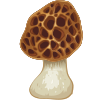

rbenn
-
Posts
375 -
Joined
-
Last visited
rbenn's Achievements




Terms of Use | Privacy Policy | Guidelines | We have placed cookies on your device to help make this website better. You can adjust your cookie settings, otherwise we'll assume you're okay to continue.